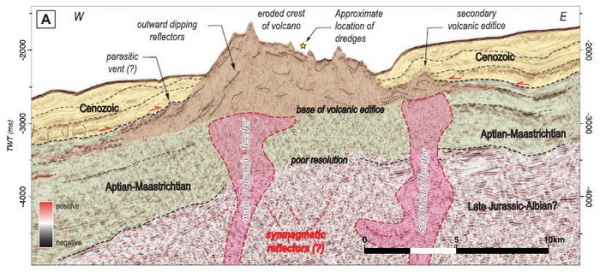A new study published in Geology concludes that an extinct volcano off the shore of Portugal could store as much as 1.2-8.6 gigatons of carbon dioxide, the equivalent of ~24-125 years of the country’s industrial emissions. For context, in 2022 a total of 42.6 megatons (0.0426 gigatons) of carbon dioxide was removed from the atmosphere by international carbon capture and storage efforts, according to the Global CCS Institute. The new study suggests that carbon capture and storage in offshore underwater volcanoes could be a promising new direction for removal and storage of much larger volumes of the greenhouse gas from the atmosphere.
“We know that most countries, including Portugal, are making efforts to decarbonize the economy and our human activities, this is a message that this may be one of the instruments to solve the problem” says Ricardo Pereira, a geologist at the NOVA School of Science and Technology, and co-author of the study.
Storing carbon dioxide in an extinct volcano would rely on a process known as ‘in situ mineral carbonation.’ In this process, carbon dioxide reacts with elements in certain types of rocks to produce new minerals that safely and permanently store the carbon dioxide. Elements like calcium, magnesium, and iron combine with carbon dioxide to form the minerals calcite, dolomite, and magnesite, respectively. Rocks that contain large amounts of calcium, iron, and magnesium are ideal candidates for this process—such as the volcanic basalts that make up most of the sea floor. Knowing this, the researchers targeted an offshore volcano for a few reasons—the structure of the volcano could provide an ideal architecture for carbon injection and storage, the rocks are the right type for the reactions involved, and the location Is not too close to large populations, but also not too far.
Read more at: The Geological Society of America
Annotated seismic cross-section of the Fontanelas volcano. (Photo Credit: Pereira and Gamboa, 2023)


